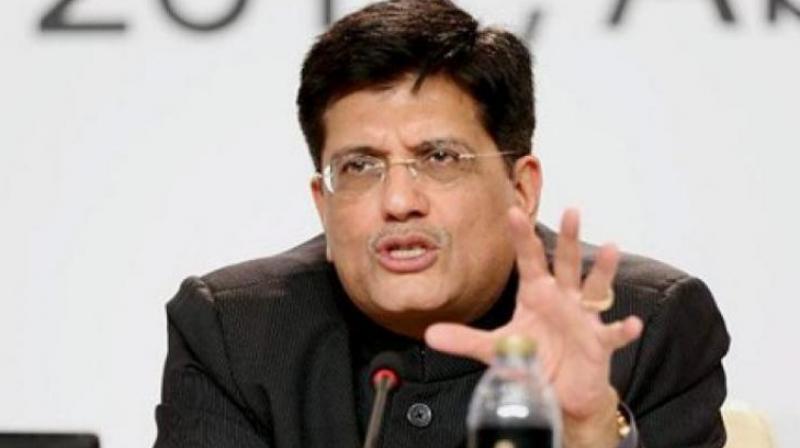People-friendly Budget strikes the right note, looking to 2030

The interim finance minister has presented a coherent, purposeful and balanced Budget which is fully aligned towards meeting the social and economic goalposts envisioned for the country. It strives to address the key socio-economic challenges even as it tries to maintain fiscal discipline and strengthen the momentum of growth. This Budget has many refreshing provisions which, going forward, would help build the foundations of a new India in the times to come.
The government no doubt had to weigh multiple and understandably complex challenges while framing the Budget. With the coming elections and the economy on the cusp of a gradual recovery, there were expectations of a populist Budget. However, the Budget provisions deftly sought to address the present economic realities even while delivering on the people’s aspirations.
This Budget will be remembered for unveiling an ambitious 10-dimensional roadmap for 2030 which articulates the grand vision of a modern, technology-driven, high-growth, equitable and transparent society. This is to help India leapfrog to a $5 trillion economy in the next five years and a $10 trillion economy in the next eight years. It may be noted the 10 Dimensions outlined here are broadly in line with what the CII had headlined in its India@75 Vision document.
The Budget has devised just the right strategies to take India on the inclusive growth path. The key takeaway of the Budget is its focus on the food economy, alleviating agricultural distress, social security for the unorganised workers, tax concessions for the middle class, simplification of the tax system, MSMEs, housing and real estate, improving education and health outcomes, among others. The measures are meant to galvanise the economy by raising consumption and taking it to a path of higher and more inclusive growth.
The focus on the rural economy, both the farm and non-farm sectors, is welcome. The allocation of Rs 19,000 crores (BE) under the PM Gram Sadak Yojana in FY20, against Rs 15,500 crores in 2018-19, is reflective of the government’s commitment to improving rural infrastructure.
The standout announcement in this Budget is that of the Pradhan Mantri Kisan Yojana — a pathbreaking farm income support scheme focused on small and marginal farmers, which is likely to ameliorate the rising stress faced by the farm sector. A shift from price-based support towards direct income support is transformational, and will not only limit leakages but also prevent market distortions. It is encouraging to note that the scheme was made financially viable while not ignoring fiscal consolidation.
Commendably, the Budget has also sought to incentivise the non-farming segment as rural activity is increasingly shifting towards allied areas such as animal husbandry, fisheries, etc. This would help to diversify the rural economy and improve the purchasing power of the rural population.
The Budget has taken steps for strengthening the welfare mechanism for the marginalised sections of the society. The introduction of the Mega Pension Scheme, which will provide assured pension of Rs 3,000 per month to nearly 10 crore people working in the largely fragmented informal sector, is notable. It will help improve the welfare of the large number of workers engaged in the informal sector at present.
Taking note of the long-pending demand, the Budget has announced a spectrum of measures to provide tax relief to the salaried class. Individual taxpayers with annual incomes up to Rs 5 lakhs will now receive a full rebate from income-tax, while the standard deduction for salaried people have been raised from Rs 40,000 to Rs 50,000. The rise in disposable income anticipated by these measures will go a long way to raise the standard of living for the middle class, which in turn will provide a fillip to consumption spending. Steps like processing income-tax returns in 24 hours and initiating the refunds issued simultaneously will help to improve the system’s transparency.
The Budget also announced significant measures for the housing and real estate sector, like extending the period of exemption from levy of tax on notional rent, on unsold inventories, from one year to two years. In addition, there are provisions under the Income-Tax Act to make homes more affordable, which is also a positive for the real estate sector. The impetus to real estate and housing is likely to have a significant multiplier impact on growth. The technology and digitisation route taken towards simplification of procedures relating to filing of income-tax returns are timely and well taken.
It is noteworthy that the imperative to press the pedal on growth with inclusion has not deflected the attention from maintaining a fiscally sustainable strategy in a major way. The fiscal deficit, which was anticipated earlier at 3.3 per cent of GDP, has now been raised to 3.4 per cent of GDP for the current year. But it is not a big factor given the socio-economic realities of the country. It is hoped the government would return to the glide path once the conditions become propitious.
To conclude, the Budget has struck the right chord with major stakeholders as it takes a balanced approach to achieving the multiple objectives of the Indian economy.

